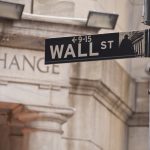How the Ultra-Wealthy Are Defending Themselves Against Arson, Kidnapping—and Terror.
Behind the Gates: How the Ultra-Wealthy Are Quietly Fortifying Their Lives Against Modern Threats.
As resentment toward the ultra-rich and rising fascination with celebrity net worth grows louder—from social media vitriol to violent incidents in real life—America’s wealthiest families are going quiet. Not about their money, but about how they’re now spending millions to stay alive.
A Climate of Fear at the Top
The shift began in late 2024 when UnitedHealth Group CEO Brian Thompson was fatally shot—an act that stunned Wall Street and the public alike. Then came the January abduction of French crypto founder David Balland, who was held for ransom and mutilated before being released. In April, billionaire Steve Sarowitz’s Illinois estate was targeted in an arson attack by an alleged blackmailer.
These weren't isolated incidents. They reflect a broader trend: the rich are becoming visible targets in an increasingly hostile world. Online, nearly half of young voters polled said they empathized with Thompson’s alleged killer. In the weeks that followed, threats against corporate executives surged by more than 40%.
The Billionaire's New Status Symbol: Invisibility
According to James Hamilton of Gavin de Becker & Associates, demand for private security has exploded. Allied Universal, the world's largest security provider, reports a 1,500% rise in threat assessment requests compared to last year. Nisos, a risk intelligence firm, tracked a sharp spike in online aggression toward CEOs. Multiple firms told Finance Monthly that they are turning clients away—they simply don’t have enough vetted professionals to meet demand.
The sudden rush has also led to a flood of imposters. Licensing requirements vary wildly by state, and in some cases, a few hours of training is all that’s needed to pose as a professional. As Chris Falkenberg, founder of Insite Risk, puts it: “Buy sunglasses and act confident—that’s all it takes to fool some clients.”
What Security Costs—And Who's Paying the Most
Protecting the ultra-wealthy isn’t cheap. A standard setup involving a rotating team of drivers, residential surveillance, cyber monitoring, and travel coverage can run over $2 million per year. Even partial coverage—say, trained chauffeurs and an online threat detection team—can cost upwards of $500,000 annually.
Among corporate giants, Meta leads the pack. In 2024, it spent $24.4 million safeguarding CEO Mark Zuckerberg, citing in SEC filings that he is “synonymous with the company.”
Alphabet came in second with $6.8 million for Sundar Pichai, while Tesla paid $2.4 million for Elon Musk—a figure expected to rise following recent threats and his reentry into political life. Nvidia’s Jensen Huang, an increasingly high-profile figure in the AI space, cost the company $2.2 million in personal security last year. At the lower end, Apple spent just $800,000 to protect CEO Tim Cook.
Mark Zuckerberg: The Gold Standard in Billionaire Protection

Meta CEO Mark Zuckerberg enjoys a high-risk hobby—wakesurfing—under the constant watch of his elite personal security team, even during leisure moments.
No one embodies the intersection of tech, fame, and personal risk like Mark Zuckerberg. His security detail is the most advanced in Silicon Valley—and possibly the country. In addition to Meta’s reported $24.4 million spend, insiders suggest that Zuckerberg supplements this budget with his own resources.
His home in Palo Alto is equipped with panic rooms, biometric scanners, anti-drone technology, and AI perimeter monitoring. He also owns a fortified 1,500-acre estate in Kauai, Hawaii, where an international team maintains round-the-clock surveillance.
Zuckerberg’s lifestyle—surfing, hydrofoiling, heli-skiing—isn’t just extreme, it’s calculated. Every activity is pre-approved and scouted by trained professionals. “He’s got people around him who are trained in everything from wilderness rescue to water safety,” says security CEO Michael Julian. “You’re not just hiring bodyguards anymore. You’re hiring paramedics, cybersecurity analysts, and logistics specialists.”
His operations rival those of a presidential security detail, complete with encrypted communications, live GPS tracking, and digital threat monitoring on multiple continents.
Keeping Kids Safe Without Smothering Them
Children are increasingly the focus of billionaire security strategies—but you won’t see bodyguards at the school gate. Protection now leans toward stealth. Some wealthy families use alternate surnames when enrolling their children in school. Others hire security professionals who pose as nannies, tutors, or drivers. In many cases, kids wear tracking-enabled clothing or carry devices that silently ping updates to a family office.
Dan Linskey of Kroll recalls deploying a full team to a college campus when a client’s daughter received a threat. She never knew. “That’s the goal,” he says. “Make them feel normal while staying safe.”
Security consultant Amanda Uhry has noticed a trend: the wealthier the parent, the more discreet the protection. “It’s often the millionaires who go overboard with bodyguards,” she says. “Billionaires tend to prefer their kids grow up unaware, unburdened, and unafraid.”
More Dangerous Than Kidnappers? Your Inner Circle
Many threats today come not from outsiders, but from inside the home—trusted employees, family members, former assistants. Executives are increasingly hiring forensic accountants to monitor for fraud, cyber experts to audit their digital footprints, and legal counsel to preemptively handle blackmail.
“The worst breaches aren’t from hackers,” says Falkenberg. “They’re from someone who already has the keys.”
Will the Panic Last?
Maybe not. “People forget,” says Falkenberg. “Every time there’s a shooting or a kidnapping, the phones light up. But give it six months, and half of them cancel the contract.”
Still, some believe we’re entering a permanent new era of security—one where discretion is the true sign of wealth, and visibility equals vulnerability. With the trial of Brian Thompson’s accused killer set to begin later this year, a fresh wave of executive anxiety is expected.
Frequently Asked Questions
How much does billionaire security cost in 2025?
Typical security packages range from $500,000 to over $2 million per year. Full-time executive teams with travel coverage, medical support, and cyber defense can cost substantially more. Meta’s Mark Zuckerberg cost $23.4 million in 2023 alone.
Is CEO protection tax-deductible?
Yes, if there’s documented threat risk. Many companies disclose these costs in SEC filings as part of executive compensation.
Do billionaire children have bodyguards?
Not usually in the visible sense. Most families prefer covert strategies—like GPS tracking, undercover drivers, and alternate names at school.
Who else spends heavily on protection?
In 2023, Alphabet spent $6.8 million on Sundar Pichai, Tesla spent $2.4 million on Elon Musk, and Nvidia spent $2.2 million on Jensen Huang.
Is this a temporary trend?
Security experts say concern spikes after high-profile events, but wanes over time. However, given rising inequality, political polarization, and AI disruption, some believe the ultra-rich will need permanent protection going forward.
Key Takeaway:
In today’s world, being rich means being at risk. The ultra-wealthy aren’t just building wealth—they’re building walls you’ll never see.
Explore More with Finance Monthly
From boardrooms to backstage, the Finance Monthly Net Worth section profiles the world’s most intriguing figures—CEOs like Elon Musk, music legends like Jeff Lynne and Ringo Starr, sports icons like Mike Tyson, and even rising stars like Paris Jackson. Whether it’s political powerhouses or cultural trailblazers, we go beyond the headlines to track the money, influence, and legacy behind every name.















